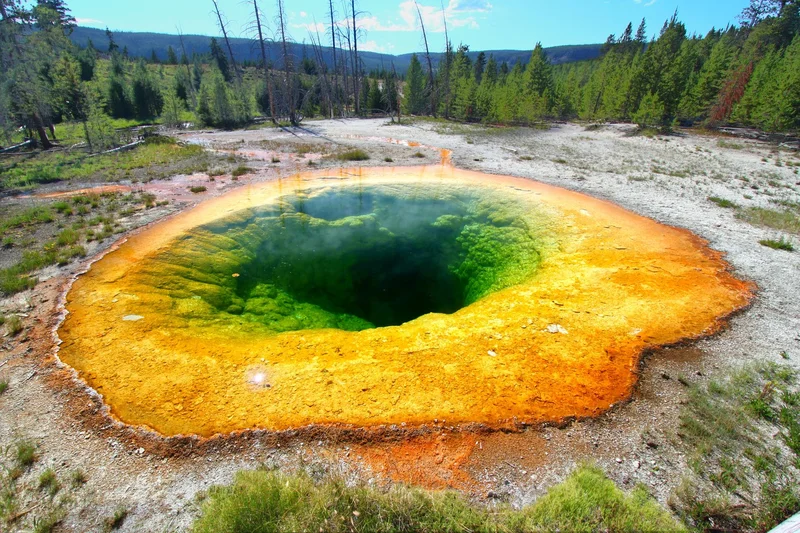Campi Flegrei. The name itself doesn’t exactly roll off the tongue, does it? Try saying it five times fast. Now, try understanding the seismic activity there based on the available data. Good luck. What we have is a volcanic caldera near Naples, Italy, that's been experiencing some... unrest. And by "unrest," I mean ground uplift and earthquakes.
The recent paper analyzing earthquake rupture velocity and stress drop interaction in the Campi Flegrei caldera (that's a mouthful, I know) digs into the mechanics of what's happening beneath the surface. We’re talking about a caldera formed by two massive eruptions thousands of years ago, now exhibiting this slow, vertical ground movement, accompanied by seismic activity. The uplift, reaching 1.3 meters in January 2024 (measured at Pozzuoli, the apex of the deformation), is hardly slow when you consider the geological timescale.
Over the past decade, more than 10,000 earthquakes have rattled the region, concentrated between 1 and 4 km deep. The paper highlights that since 2019, seismicity has increased in number, magnitude, and spatial extent. Now, here's the interesting part: the largest reported event, the Md 4.6 earthquake of March 13, 2025, was actually a compound sequence – two closely timed shocks (Mw 3.3 and Mw 4.0). This detail is crucial. It's not just about the magnitude; it's about how that magnitude was achieved. Was it a single, large rupture, or a series of smaller events clustered together? This distinction could tell us a lot about the underlying mechanisms at play.
The authors propose that the earthquakes are primarily driven by changes in loading conditions on pre-existing faults around the caldera. It’s like a complex game of geological Jenga, where removing one block (or in this case, depressurizing a gas-rich reservoir) can destabilize the whole structure. The interaction between this gas-rich reservoir and the overlying caprock seal controls fluid migration and earthquake triggering. Swarms of earthquakes beneath the Solfatara–Pisciarelli vent system further suggest that fluids are preferentially ascending through highly fractured rock volumes, inducing seismicity.

And this is the part of the report that I find genuinely puzzling. The paper relies on data from 17 seismic stations across three networks (OV-INGV, RAN-Italian Strong Motion Network of DPC, and ISNet). They analyzed 56 earthquakes with duration magnitudes \({M}_{D}=3+\) (moment magnitude \({M}_{w}=2.3-3.6\)), event-station epicentral distances \({R}_{{epi}}=0-10\) km and depths \(z=2-4\) km. Seems comprehensive, right? But here's my methodological critique: are these stations optimally positioned to capture the nuances of such a complex geological environment? Are there blind spots in the data? The authors use a parametric modeling, time-domain technique called the “LPDT-method” to estimate rupture velocity, radius, and static stress drop. But how sensitive is this method to the inherent uncertainties in seismic data, especially when dealing with relatively small magnitude earthquakes?
Laboratory measurements indicate a positive correlation between average rupture velocity and stress drop. But several authors have found a negative correlation when measurements are performed at the moderate to large earthquake scale. Kanamori and Rivera show that, in a wide magnitude range, the product \(\Delta \sigma {{V}_{R}}^{3}\) (\(\Delta \sigma\) is the static stress drop and \({V}_{R}\) is the rupture velocity) scales with a power function of log[seismic moment], that can lead, under specific conditions, to \(\Delta \sigma\) inversely related with \({V}_{R}\).
It all comes down to energy. A faster propagating fracture is favored by the available energy related to high stress release during slip. But other phenomena, like a secondary slip front generation or off-fault plastic damage, would slow down the rupture velocity because of the reduction of available energy for fracture. Which is it?
The paper acknowledges the uncertainty associated with rupture velocity estimation, particularly for small earthquakes. It's generally assumed uniform and known from theoretical models (set to 90% the value of the shear wave velocity) in methods that analyze seismic signals. But is this assumption valid in the complex, fluid-rich environment of Campi Flegrei? Details on the specific calibration and validation of the LPDT-method in this particular context remain scarce.
The Campi Flegrei caldera is a pressure cooker, geologically speaking. The interplay of magmatic activity, hydrothermal fluid circulation, and pre-existing fault lines creates a highly unstable system. While the paper provides valuable insights into the source properties of earthquakes in the region, it also highlights the inherent challenges in accurately measuring and interpreting seismic data in such a complex environment. Until we can better constrain the uncertainties in rupture velocity and stress drop estimations, any conclusions about the underlying mechanisms driving the unrest at Campi Flegrei should be viewed with a healthy dose of skepticism.